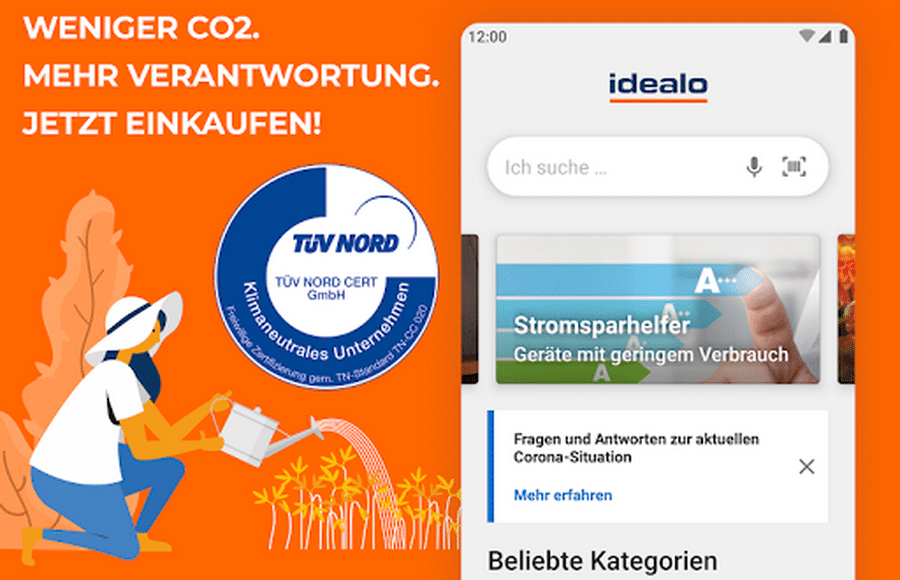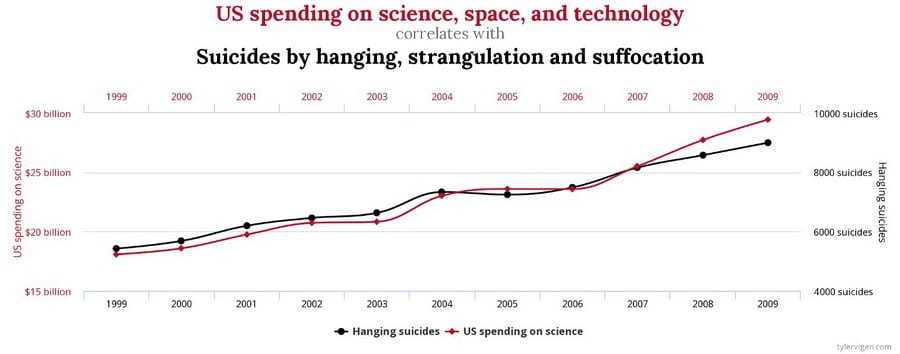The Pros and Cons of App Growth Hacking and How to Figure Out What Works for Your App

For app marketers, developers or publishers, the term “growth hacking” is likely no stranger to you. With at least a decade of development as a discipline, it’s become the de facto model to follow and fast track the growth rate of customer base, revenue, and other aspects of marketing and business.
However, the concept’s effectiveness is yet to match its popularity. As well-known as it may be, it’s by no means all-powerful and all-good. There are sound practices to follow and make it work, as well as mistakes to avoid or see it fail. That’s why the term is both worshipped like a miracle and labeled a “buzzword BS”.
The line between the good and the bad of growth hacking lies in how you make use of its advantages while minimizing its disadvantages. This makes it crucial to identify them early on and figure out your own path accordingly. More importantly, since the topic is too broad and complex to manage all at once, it’s also helpful to break it down into the three core elements and evaluate one at a time, namely: Marketing (behavioral) psychology, experimentation, and automation. If this resonates with your concerns, below is a brief guide on the pros and cons of growth hacking via these elements.
I. Behavioral Psychology
Growth hacking is a game of triggers, the purpose of which is to influence the behaviors of app users, across different stages of the funnels. In early stages, where traffic is critical and users are merely an audience, you’d need to trigger them to see the presence of your app or click on an ad promoting it. In later stages, they would need to be triggered again into downloading it, opening it for the first time, finishing a session in it, and spending money in it, to name a few.
Here’s where growth hacking matters: It teaches you what triggers are possible for what audience and app, and how to leverage them. Most importantly, all of those are enabled by a deep understanding of behavioral psychology. Growth hacking, in relation to this, stands for staging your app’s touchpoints in order to alter users’ actions into the kind you want.

Understand the psychology, influence the behavior
Advantages of Leveraging Psychology in App Growth
The biggest advantage of leveraging psychology in app growth is it brings you a host of “mind control” techniques that can be applied in app marketing. If you’ve heard of the anchor effect, the bandwagon effect, social proof, reciprocity, loss aversion or scarcity and its application in app growth, that’s behavioral psychology at work. They operate based on one simple principle: Users are consumers, consumers are humans, and human’s rationality is “bounded” within many constraints. Hence, it’s flawed, and they’re vulnerable to cognitive errors — the kind of errors that can be taken advantage of for, say, growth hacking.
Examples of applied behavioral psychology are ubiquitous. We’ve seen users motivated by fame get hooked by Tiktok, or those affected by FOMO buy into 23andme, just to name a few. What these cases have in common is they often bring your app better conversion, retention & engagement rates, or more purchases, time and money that users spend in the app. As far as app growth concerns, having these means mission accomplished.
Disadvantages of Using Psychological Triggers
However, the use of psychological triggers can often come with a disadvantage. Since the whole point of their implementation is to influence changes in attitudes & behaviors without the “subjects” noticing it (wouldn’t serve its purpose if exposed), it’s inherently manipulative. When used in or for unethical manners or purposes, they become vile “tricks” that can cause serious damage to long-term growth in exchange for short-term benefits.
Homescapes is a great example of this. Its developer, Playrix, used fake ads to appear more impressive, thus creating an illusion of authority — a key ingredient of trust in marketing. However, the ads got banned soon after for ethical reasons, the developer was boycotted, and the (gaming) app faced surges in negative reviews as well as (seemingly) uninstalls. Compared to the “hacked” growth that it may bring, is the backlash of psychological manipulation worth it?

Trick users and they may come back to haunt you (Source: Google Play)
How We Do It at idealo
We are big fans of “honest marketing” to begin with. The key is to craft compelling stories in marketing campaigns that both apply psychology for better performance and remain truthful for ethical reasons. An example of this is our attempt to increase trust for the app by increasing credibility for the company via the use of certification.
In 2019, idealo was certified by TÜV Nord as a climate neutral company. From a corporate branding perspective, communicating this honor to our customers would be straightforward, as we received an official badge to showcase it. The big question, however, is how do we use it for app growth hacking as well. Since the award was not for the app but the company alone, we set the “honesty” boundary for it in marketing from day one to avoid confusing users with misleading claims like “certified climate neutral” or “sustainable shopping app.”
As a solution, we used the app stores as a channel for brand communication, where the focus was more on the company than usual. Our tagline was “We are climate neutral,” created and tested based on the hypothesis that if users support our collective cause, they will download our app. Our visuals reflected the targeted user archetype that this hypothesis links to, not app features or contents. Here’s how one of our assets looked:

Caption (translated from German): “Less CO2. More responsibility. Start shopping now!”
That asset went in an A/B test and came out with four winning variants, equaling at least four times the users resonated positively with it. The most impacted growth KPI was our app store conversion rate, where uplifts reached as much as 24% – safe to say we “hacked” it both effectively and ethically.
II. Experimentation
The ability to test, learn and adapt different marketing elements is known to be key in growth hacking. It helps you evaluate, validate and navigate through a vast range of options and ideas so you can keep the best for optimal results. Eventually, when every growth component is in the best possible form and works well together, your growth strategy as a whole will operate on the highest performance level as well.
Upside Aspects of Testing
On the upside, testing directly provides you with incremental performance uplifts, while indirectly offers you the learnings that support growth in the long run. For every report about an experiment, you’d often hear insights like 15% increase in opt-in rate, 20% more purchases, 25% higher traffic, among other types of impact. What’s more, because each test is driven by a falsifiable hypothesis, yielding a result for it means generating data to accept or reject a certain idea that could be used in app growth.
For instance, you have doubt about the price point of an in-app purchase (IAP) in your app, as the current one doesn’t seem to perform all that well, but you aren’t certain what a better one looks like, so you can’t decide. What you already have, though, is an idea and a hunch for a new price point. You can, afterwards, test it against the current one to see if users respond differently, and by how much. That difference, in the end, is the projected impact as well as the data that justifies your decision whether or not to continue with the existing price point. In shorts, growth hacking means you’ve got to test to see and learn.
Downsides of Experimentation
Yet, there’s a critical drawback of all experiments that are rarely addressed: No matter how realistic a test may be, its result is not real. It’s like simulations – conditions resemble real life, but they’re observed in a lab. You’d be looking at test subjects and samples, documented in a limited time frame and constrained environment. The results, thus, shouldn’t be taken for granted.
In growth hacking for apps, evidence of this is rather obvious. For example, most tests yield results in the form of correlation, not causality, due to their quantitative or statistical nature. This means there’s still a chance that the change in performance that you observe in a test is a coincidence. Ultimately, decisions made based on false positives or negatives are still uninformed decisions that could devastate your app’s growth.
Imagine, if you see a positive correlation between government spending on science, space & tech and the number of suicide cases, would you decide to minimize the former in order to mitigate the latter? At the end of the day, for app growth, the only way to confirm what causes better responses from users is to ask them . Unfortunately, this is not possible via current testing methods or platforms.

There’s a correlation, but is there a causal relationship? (Source: Tyler Vigen)
How We Test Things at idealo
First off, we have a very specific perspective on growth experiments for app: It’s all about trust. Each test and its result is taken into the decision-making process with one question, “Can we trust it enough to make use of it in our growth efforts?” It’s a simple question, but it reminds us that nothing should be taken for granted — and everything has to make sense.
In practice, this translates into a multitude of testing methods that we utilize to validate the same ideas under different circumstances. For example, growth hacking a shopping app like idealo means it’s vital to figure out what works best for the Black Friday sale every year. Of course, vetting different asset variants via A/B testing is crucial. However, it fails to answer the following (among others):
- Would all Black Friday-themed assets work because of seasonality or if the occasion is simply a coincidence? Testing asset variants is nothing like testing the external factors.
- Even if it’s a seasonal thing, can we trust when the season precisely starts and ends?
In order to answer those questions, we usually run further tests without fully trusting the initial test results. For instance, in order to confirm if a Facebook ad (for app installs) performance is affected by seasonality, we dedicate an “extended Black Friday” test well before, after, and during the season. If results are similar, seasonal factors can be ruled out. In addition, if the performance of test variants show sudden, drastic and unexpected movements on certain dates and times, we can also estimate when exactly the Black Friday sale season is present.
Ultimately, we managed to find out:
- The season started about a month before the actual Black Friday — and early recognition helped in early preparation, which in turn resulted in immensely better performance.
- 17% of our active markets aren’t influenced by seasonality — seasonal factors revealed themselves as a coincidence for 17% of the time.
- 50% of our markets responded better to the Christmas theme during the Black Friday season than the Black Friday theme — there might have been this “blurred line” between the two seasons all along and we could see it (and trust it) now because we tested it.
These, along with many other insights revolving around the same topic of seasonality, have helped us get an immense dose of reality. Decision-making, as a result, became so much more informed by trustworthy data.
III. Automation
In general, automation stands for the utility of technological means to eliminate part or all of human labor in certain processes. In app growth, automation means using software as tools to fast track, that is, “hack” your app’s growth rate. You’ll be able to get more done in less time and with less material and human resources. This is why growth teams nowadays rarely go without a strategy in place for Martech, Adtech, or app growth tech stack that’s full of tools to automate their tasks.
Automation Benefits
One noteworthy advantage of automation is it makes your work tremendously faster. Whether it’s the operation of ad campaigns on Apple Search Ads and Facebook, the handling of app store user reviews or the distribution of push notifications, as soon as a tool is involved, your work pace and efficiency will improve. Eventually, you’ll get to a higher level of scalability for your growth strategy.
Another benefit that automation brings is it makes your work a lot smarter as well. For one, you won’t have enough data to judge the value of different traffic sources into your app unless an attribution tool (MMP) is used. For another, the much needed keyword data for search optimization will remain a myth if a keyword tool isn’t utilized. To sum up, if you want a vast amount of data to be automatically tracked, stored and presented to you, a set of tools is critical.
Can Growth Hacking Automation Be Harmful?
Automation in growth hacking can be harmful as it makes your growth activities overtly mechanical. As the basic requirements of any automated process or task is that it follows repeated, lean and consistent pipelines, there’s little to no space for human interpretations, creativity or changes in between.
To exemplify, imagine using an automatic app store assets management tool, which makes changes on predetermined schedules and based on the materials you feed it with in advance. Depending on how much the production stage of the materials is already automated, you can eliminate either half or all of the “upload & release” task for them with this tool. However, what if you’ve received too many variants per asset because the production team felt more creative than usual?
They can’t be uploaded simultaneously. They shouldn’t be uploaded randomly either. A change of plans must occur to figure out the best variants to be used. This, however, isn’t covered by the tool – it’s no testing platform. Ultimately, this makes the case for manual work.

Much of any process needs to be mechanical to be automated, which can translate into less creativity at times
How We Automate at idealo
The scenario given above isn’t hypothetical. It was a real case at idealo that we had to deal with (but gladly) for our “sacred” Black Friday season. For context, we have a system where most app store assets are only 50% manually crafted and the rest is completed programmatically. For example, our screenshots would have their background artworks manually designed, then the screen grabs would be added on top with a tool, and the app store assets management tool would upload them in the end. Processes like this help our creative teams work up to five times faster.
At this pace, as we approached the 2020 Black Friday sale season, we received five variants per asset. While this is a good thing, it’s too many options to choose from, and tools don’t know how to choose. To solve this dilemma, we went for a “selective automation” approach.
As opposed to the usual complete automation approach, where things are processed automatically on their own by default, our alternative method allows us to “switch on and off” the automation process. We’d switch it on for the first variant of each asset (AKA the “control” variants), and leave it off for all the additionals. They would, then, be set up and uploaded as test variants in a benchmark against the control variants. Those with superior performance will get to stay. This way, we get both the reduced workloads and the increased control over the tools we use. Its impact on growth, eventually, was a 32% uplift in conversion rate, driven by a series of 50+ rounds of testing, the overall win rate of which was 38%.
Summing Up
Growth hacking isn’t new, but it isn’t common knowledge either. Each time it’s employed for an app, there are always opportunities to make use of and risks to avoid. As growth hacking involves not one but three different major aspects, namely behavioral or marketing psychology, experimentation, and automation, its pros and cons become more complicated to identify and respond to. Here are a few key takeaways to help you get started:
- Modern growth hacking should go beyond psychological tricks, otherwise it won’t be sustained.
- Testing is crucial, but it isn’t real life, so don’t take test results for granted.
- App growth is only half powerful when automated, the other half requires the human mind & creativity.









